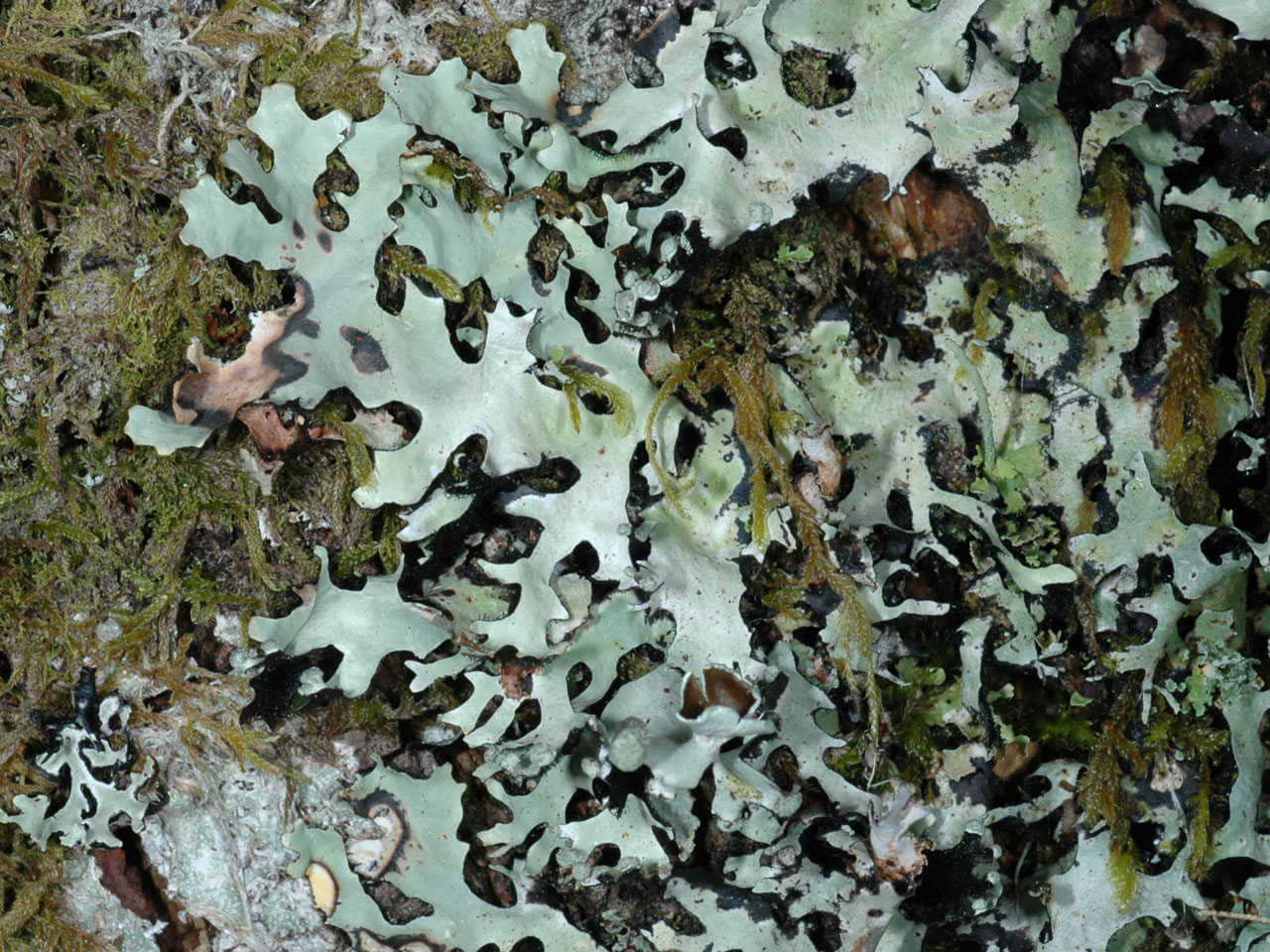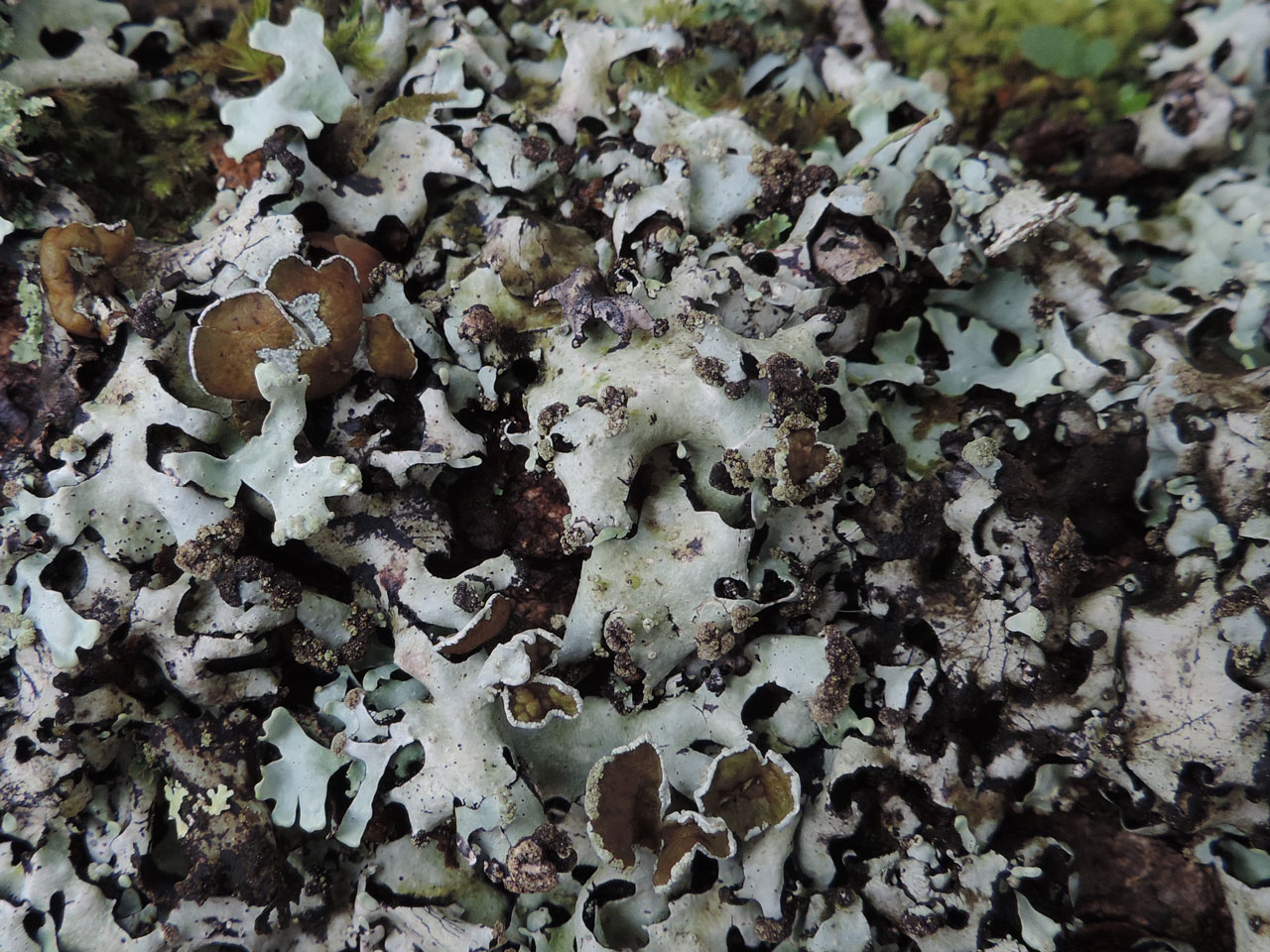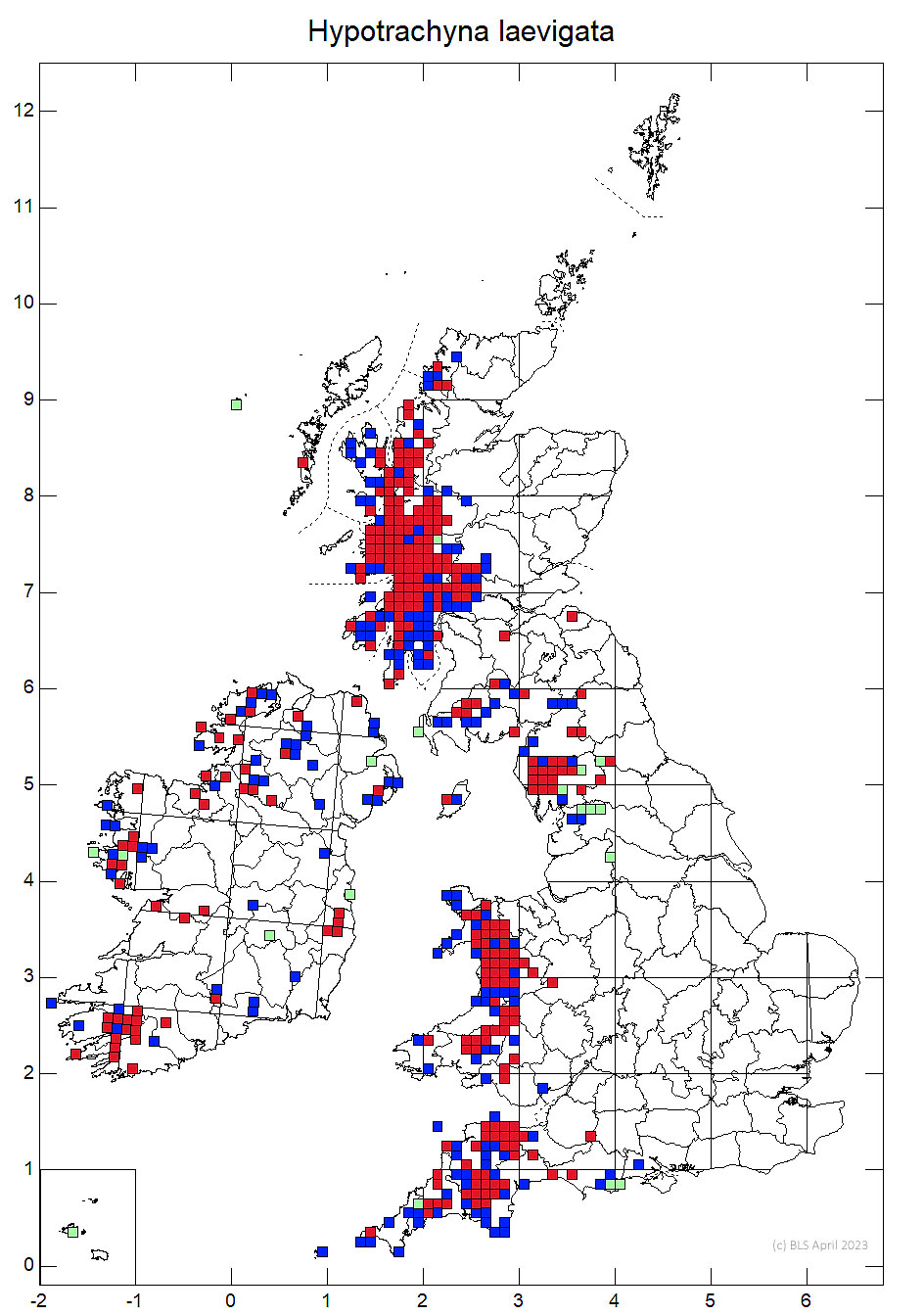Draft
Thallus loosely adnate, to 15 cm diam.; lobes crowded, becoming ± imbricate, linear to sublinear, dichotomously to subdichotomously or rarely irregularly branched, (1–) 2–6 (–8) mm broad, ± subrevolute; margins mostly entire, sometimes irregularly lobulate or laciniate-dissected, not ciliate; apices truncate, sometimes pointed; lobe axils sinuous or V-shaped; upper surface glaucous to bluish grey-white or grey-green, smooth or small-pitted, shiny or matt, maculate, sorediate; soralia terminal to subterminal, rarely cuff-shaped, often globose; soredia granular, grey or blackened; medulla white; lower surface black with a brown margin, shiny, smooth, densely rhizinate; rhizines moderately to densely branched, continuing to lobe margins and often protruding beyond, sometimes as a dense mat. Apothecia rare, laminal, stalked; disc (1–) 3–10 mm diam., dark brown; exciple mostly sorediate, entire, becoming torn on larger apothecia. Ascospores rare, reported as 18–21 × 9–13 μm but measured as 12.5–13.5 × ca 5 μm in British material. Pycnidia subterminal and laminal; conidia bifusiform, 4–6 (–7.5) × ca 1 μm. Cortex K+ yellow, medulla C+ pale orange, K–, KC+ deep orange, Pd–, UV+ bluish-grey or UV– (atranorin, chloroatranorin, barbatic acid [major], 4-O- demethylbarbatic acid [submajor], obtusatic acid [trace], norobtusatic acid [trace]).
This is a variable species but in general is characterised by the maculate upper surface, globose soralia and a white medulla, the latter clearly separates H. laevigata from H. endochlora. This also is a polyphyletic species and African populations have been assigned to a separate species, H. nyandaruaensis (Kirika et al. 2019). This provides some indication that H. laevigata populations growing in disjunct geographic areas may correspond to distinct lineages.
On well-lit acid-leached bark in damp Oak or Birch woodland and Sallow scrub, more rarely on mossy rocks and coastal cliffs, only frequent high rainfall areas (in excess of 127 cm p.a. and with over 180 rain days p.a.), but found rarely in especially humid habitats beyond this.

Local but then often abundant. W. Britain, becoming rarer to the N., absent in C. & E. Britain, scattered in Ireland.
Cannon, P., Divakar, P., Yahr, R., Aptroot, A., Clerc, P., Coppins, B., Fryday, A., Sanderson, N. & Simkin, J. (2023). Lecanorales: Parmeliaceae, including the genera Alectoria, Allantoparmelia, Arctoparmelia, Brodoa, Bryoria, Cetraria, Cetrariella, Cetrelia, Cornicularia, Evernia, Flavocetraria, Flavoparmelia, Hypogymnia, Hypotrachyna, Imshaugia, Melanelia, Melanelixia, Melanohalea, Menegazzia, Montanelia, Nesolechia, Parmelia, Parmelina, Parmeliopsis, Parmotrema, Platismatia, Pleurosticta, Protoparmelia, Pseudephebe, Pseudevernia, Punctelia, Raesaenenia, Tuckermannopsis, Usnea, Vulpicida and Xanthoparmelia. Revisions of British and Irish Lichens 33: 1-98.
Kirika, P.M., Divakar, P.K., Crespo, A. & Lumbsch, H.T. (2019). Molecular and phenotypical studies on species diversity of Hypotrachyna(Parmeliaceae, Ascomycota) in Kenya, East Africa. Bryologist 122: 140–
150.
Text by N A Sanderson, based on Cannon et al (2023).




